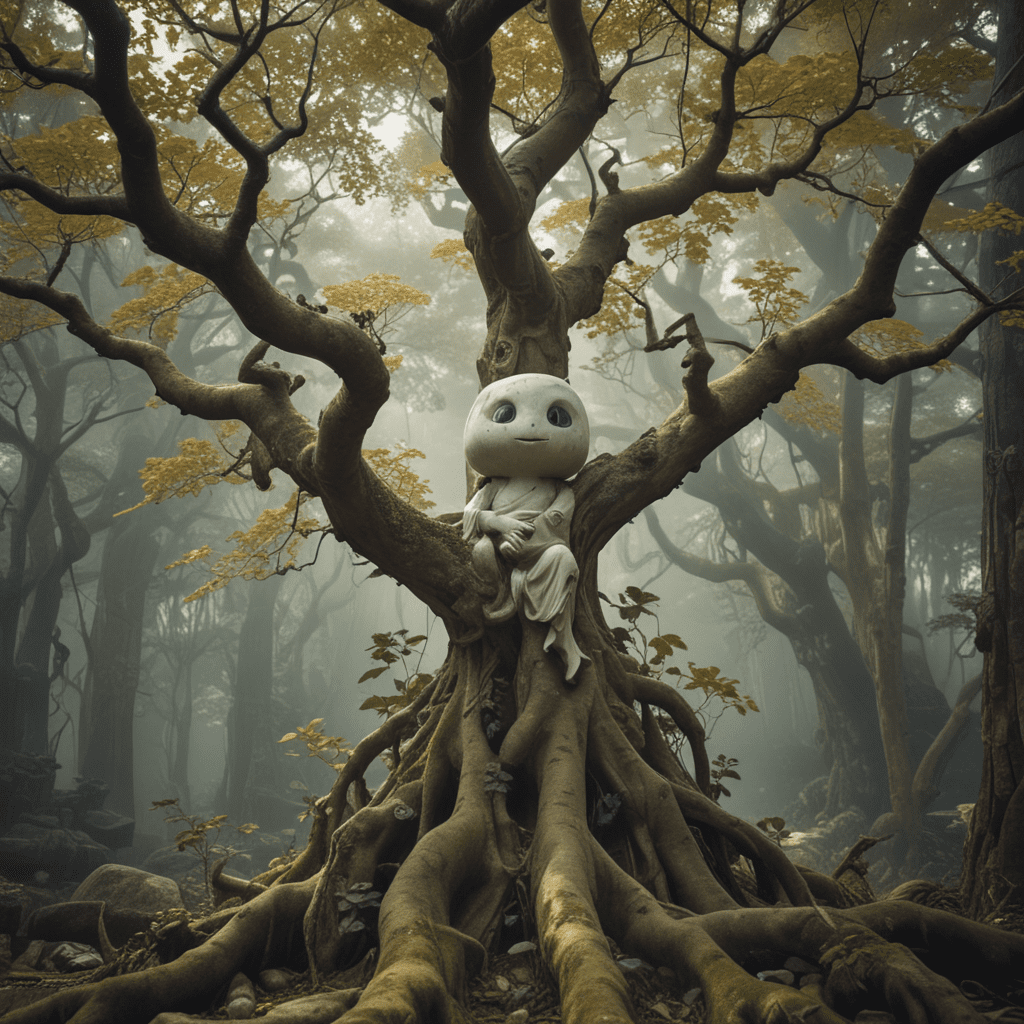The Myth of the Kodama: The Tree Spirits in Japanese Shinto Beliefs
The Kodama, enigmatic spirits of the forest, play a central role in Japanese mythology and Shinto beliefs. Rooted in animism, the Kodama myth evolved over centuries, embodying the sacred connection between humans and the natural world.
1. Introduction: The Enigmatic Kodama
The Kodama, elusive tree spirits said to inhabit ancient trees, embody the harmony between nature and spirituality in Japanese folklore. Revered as guardians of the forests, they are believed to possess extraordinary powers and embody the wisdom of the ages.
2. Origin and Evolution of the Myth: From Animism to Shinto
The genesis of the Kodama myth can be traced to animistic beliefs, where spirits were believed to reside in natural objects. As Shinto, Japan's indigenous religion, developed, the Kodama became integral to its pantheon of nature deities, embodying the sacred bond between humans, trees, and the divine.
3. Kodama in Japanese Folklore: Characteristics and Symbolism
In Japanese folklore, Kodama are depicted as having a humanoid form with pointed ears, a small stature, and a deep connection to their host tree. They are often depicted as gentle, guardians of the forest, responsible for protecting the trees from harm. Their presence signifies the health and longevity of the tree, and they are said to cry in unison when their home is threatened.
4. The Tree-Spirit Connection: Interdependence and Protection
The relationship between the Kodama and their host tree is symbiotic. The tree provides sustenance and shelter for the spirit, while the spirit ensures the tree's well-being. This interdependent connection represents the harmony between nature and the supernatural world, a cornerstone of Shinto beliefs.
5. Kodama in Art, Literature, and Popular Culture
The Kodama has captured the imagination of artists, writers, and filmmakers for centuries. They have been depicted in traditional Japanese paintings, woodblock prints, and literature, and have made appearances in modern animation and video games. Their enigmatic presence and association with nature continue to inspire and resonate with people today.
6. The Role of Kodama in Shinto Beliefs: Sacred Guardians
In Shinto, Kodama are revered as sacred guardians of the forests, responsible for protecting the trees and their surrounding environment. They are believed to possess a deep connection to the kami, the divine spirits revered in Shinto, and are considered intermediaries between the human and spiritual realms. The presence of Kodama within a forest is seen as a blessing, ensuring the health and prosperity of the land.
7. Ethical Implications: Respecting the Tree Spirits
The myth of the Kodama carries ethical implications that encourage respect for nature and its inhabitants. In Japanese culture, there is a deep-rooted belief that all living beings deserve respect, including trees and the spirits that reside within them. Cutting down a tree that is home to a Kodama is considered a grave offense, as it is seen as harming the spirit and disrupting the harmony of the forest.
8. The Kodama as a Voice for Nature: Environmental Symbolism
The Kodama has become an important symbol in environmental movements, representing the interconnectedness between humans and the natural world. Their association with trees and forests highlights the importance of preserving and respecting our ecosystems. By protecting the Kodama, we are safeguarding the delicate balance of nature and ensuring the well-being of future generations.
9. Modern Interpretations: Kodama in the 21st Century
In contemporary Japan, the myth of the Kodama continues to evolve and adapt to modern sensibilities. While traditional beliefs remain strong in rural areas, urban dwellers are finding new ways to connect with the spirit of nature through art, literature, and environmental activism. The Kodama has become a symbol of hope and resilience, reminding us of the enduring connection between humanity and the environment.
10. Conclusion: The Legacy and Relevance of the Kodama Myth
The myth of the Kodama is a testament to the enduring power of storytelling and the human desire to connect with the supernatural world. It embodies the deep respect and reverence that Japanese culture has for nature and its inhabitants. As we face the challenges of the 21st century, the Kodama serves as a reminder of the importance of preserving our environment and living in harmony with the natural world. Its legacy as a guardian of the forests and a voice for nature will continue to inspire and guide future generations.
FAQ
What is the difference between a Kodama and a Yokai?
While both Kodama and Yokai are supernatural beings in Japanese folklore, they differ in their origins and characteristics. Kodama are specifically associated with trees and are considered guardians of the forest, while Yokai encompass a wide variety of supernatural creatures with diverse abilities and appearances.
What happens if you cut down a tree with a Kodama?
In Japanese folklore, cutting down a tree that is home to a Kodama is considered a grave offense. It is believed to harm the spirit and disrupt the harmony of the forest, potentially resulting in misfortune or even physical harm to the person responsible.
How can you protect the Kodama?
The best way to protect the Kodama is to respect the natural world and avoid harming trees and forests. It is also important to be mindful of the presence of Kodama when engaging in activities such as hiking or camping, and to treat the forest with reverence and respect.
What is the significance of the Kodama's crying?
The crying of Kodama is often interpreted as a sign of distress or sadness. It is believed that when their home tree is threatened or harmed, the Kodama will cry in unison, expressing their grief and warning others of the impending danger.

